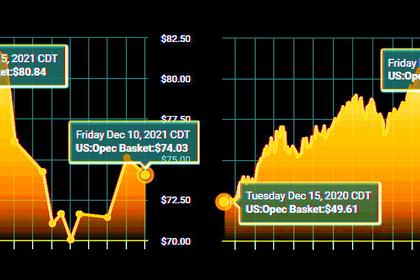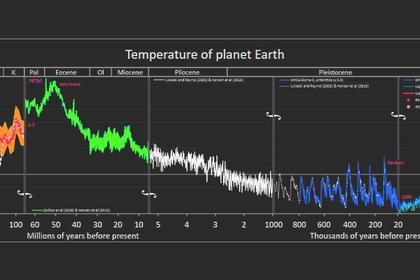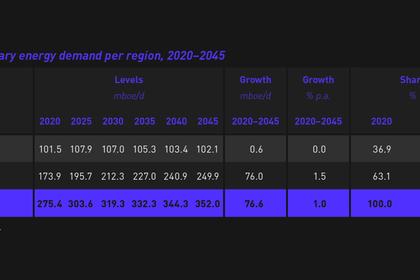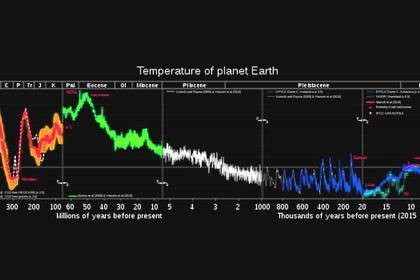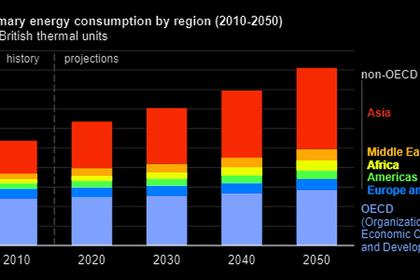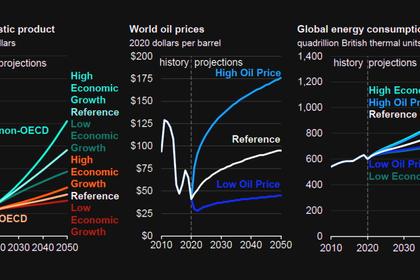
GLOBAL RENEWABLES WILL UP TO 4,800 GW
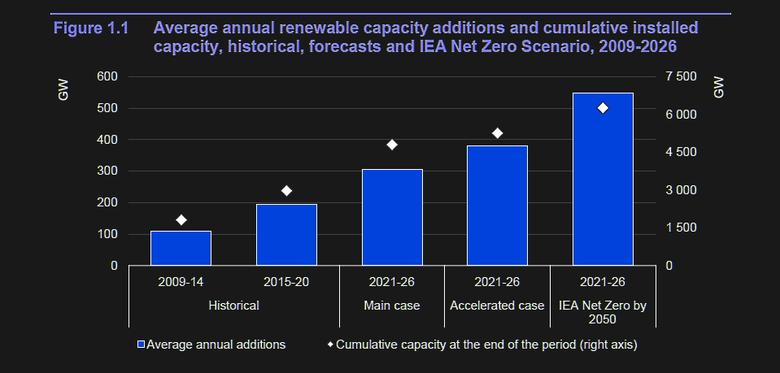
IEA - Renewables 2021 Analysis and forecast to 2026
Executive summary
Improved policies and COP26 climate goals are set to propel renewable electricity growth to new heights
Additions of renewable power capacity are on track to set yet another annual record in 2021, driven by solar PV. Almost 290 gigawatts (GW) of new renewable power will be commissioned this year, which is 3% higher than 2020’s already exceptional growth. Solar PV alone accounts for more than half of all renewable power expansion in 2021, followed by wind and hydropower.
The growth of renewable capacity is forecast to accelerate in the next five years, accounting for almost 95% of the increase in global power capacity through 2026. We have revised up our forecast from a year earlier, as stronger policy support and ambitious climate targets announced for COP26 outweigh the current record commodity prices that have increased the costs of building new wind and solar PV installations. Globally, renewable electricity capacity is forecast to increase by over 60% between 2020 and 2026, reaching more than 4 800 GW.
This is equivalent to the current global power capacity of fossil fuels and nuclear combined. Overall, China remains the leader over the next five years, accounting for 43% of global renewable capacity growth, followed by Europe, the United States and India. These four markets alone account for 80% of renewable capacity expansion worldwide.
China and the European Union are set to overshoot their current targets, setting the stage for a more ambitious growth trajectory. China’s commitment to reach carbon neutrality before 2060 has led to new nearer-term targets, such as 1 200 GW of total wind and solar PV capacity by 2030. We forecast that China will reach this target four years early thanks to the availability of long-term contracts, improved grid integration, and the cost competitiveness of onshore wind and solar PV compared with coal generation in many provinces. The trajectory of renewable capacity growth over the 2021-26 period indicates that renewable power growth in the European Union as a whole is set to outpace what the current National Energy and Climate Plans (NECPs) envision for 2030. This trend supports the ambition of reaching the stronger targets being finalised under the “Fit for 55” programme. Rapid deployment is being driven by member countries implementing larger auction volumes, corporations contracting for more renewable electricity, and consumers continuing to install large amounts of solar panels.
Improving competitiveness, ambitious targets and policy support are putting renewable power on course for new highs in India and the United States. Relative to existing capacity, renewable power is growing faster in India than any other key market in the world, with new installations set to double over our forecast period compared with 2015-20. Solar PV is expected to lead the way, driven by competitive auctions aimed at achieving the government’s ambitious renewable power target of 500 GW by 2030. Over the 2021-26 period, the expansion of renewable capacity in the United States is 65% greater than in the previous five years. This is the combined result of the economic attractiveness of wind and solar PV, increased ambition at the federal level, the extension of federal tax credits in December 2020, a growing market for corporate power purchase agreements, and growing support for offshore wind.
Despite rising prices, solar PV will set new records and wind will grow faster than over the previous five years
Even with surging commodity prices increasing manufacturing costs for solar PV, its capacity additions are forecast to grow by 17% in 2021. This will set a new annual record of almost 160 GW. Solar PV alone accounts for 60% of all renewable capacity additions, with almost 1 100 GW becoming operational over the forecast period in our main case, double the rate over the previous five years. In a significant majority of countries worldwide, utility-scale solar PV is the least costly option for adding new electricity capacity, especially amid rising natural gas and coal prices. Utility-scale solar projects continue to provide over 60% of all solar PV additions worldwide. Meanwhile, policy initiatives in China, the European Union and India are boosting the deployment of commercial and residential PV projects.
Onshore wind additions through 2026 are set to be almost 25% higher on average than in the 2015-2020 period. Global onshore wind additions doubled in 2020, reaching an exceptional level of almost 110 GW. This was driven by an acceleration in China as developers rushed to complete projects before subsidies expired. While annual additions in the coming years are not expected to match 2020’s record, we forecast that they will average 75 GW per year over the 2021- 2026 period.
Total offshore wind capacity is forecast to more than triple by 2026. By then, offshore wind additions are expected to account for one-fifth of the global wind market, a major milestone. Global capacity additions of offshore wind are set to reach 21 GW by 2026, thanks to rapid expansion in new markets beyond Europe and China. This includes large-scale projects that are expected to be commissioned in the United States, Chinese Taipei, Korea, Viet Nam, and Japan.
The expansion of dispatchable renewables is critical to support the integration of more wind and solar, but their growth is forecast to slow slightly. The expansion of hydropower, bioenergy, geothermal and concentrated solar power accounts for only 11% of renewable capacity expansion worldwide over our forecast period. Relatively higher costs, lack of policy support and limited remuneration of flexible and dispatchable renewables discourage their expansion.
Asia is set to overtake Europe as India and Indonesia lead renewed growth in global demand for biofuels
Following a historic decline last year amid global transport disruption, total biofuel demand is on course to surpass 2019 levels in 2021. In our main case, annual global demand for biofuels is set to grow by 28% by 2026, reaching 186 billion litres. The United States leads in volume increases, but much of this growth is a rebound from the drop caused by the pandemic. Asia accounts for almost 30% of new production over the forecast period, overtaking European biofuel production by 2026. This is thanks to strong domestic policies, growing liquid fuel demand and export-driven production. Recent Indian ethanol policies and blending targets for biodiesel in Indonesia and Malaysia are responsible for most of the growth in Asia. India is set to become the third largest market for ethanol demand worldwide by 2026.
Renewable heat has gained some policy momentum, but its market share is not set to increase significantly
Since the start of 2020, heat from renewable sources has benefited directly or indirectly from several policy developments, mostly in Europe. Under current policies, renewable heat consumption, excluding traditional uses of biomass, is expected to increase by one-quarter during the 2021-26 period. Its share of global heat consumption is only forecast to rise from 11% in 2020 to 13% in 2026. Fossil fuels are set to continue meeting much of the growing global demand for heat, leading to a 5% increase in heat-related CO2 emissions over our forecast period.
The lack of policy and financial incentives for renewable heat is preventing faster growth. Globally, more than one-third of heat consumption is not covered by any financial incentive for renewables, and more than half is not subject to any renewables-related regulatory measures. The fragmented nature of heat markets and local characteristics of heat demand partly explain the limited national policy coverage. This makes greater collaboration with subnational actors necessary.
High commodity and energy prices bring significant uncertainties
Rising commodity, energy and shipping prices have increased the cost of producing and transporting solar PV modules, wind turbines and biofuels worldwide. Since the beginning of 2020, prices for PV-grade polysilicon more than quadrupled, steel has increased by 50%, aluminium by 80%, copper by 60%, and freight fees have risen six-fold. Compared with commodity prices in 2019, we estimate that investment costs for utility-scale solar PV and onshore wind are 25% higher. In addition, restrictive trade measures have brought additional price increases to solar PV modules and wind turbines in key markets such as the United States, India and the European Union.
Around 100 GW of contracted capacity risks being delayed by commodity price shocks. Equipment manufacturers, installers and developers are absorbing cost increases in different ways, with some sectors being more heavily affected than others. Smaller companies are more exposed because of their more limited finances. Higher prices for solar PV and wind plants pose a particular challenge for developers who won competitive auctions anticipating continuous reductions in equipment prices. If commodity prices remain high through 2022, three years of costs reductions for solar and five years for wind would be erased. The increased costs would require over USD 100 billion of additional investment to install the same amount of capacity. This is equivalent to increasing today’s annual global investment in renewable power capacity by about one-third.
But higher natural gas and coal prices have improved the competitiveness of wind and solar PV. For corporations, fixed-price renewable energy contracts serve as a hedge against higher spot prices for fossil fuel energy. For governments, higher electricity prices have not brought higher subsidies for wind and solar PV, as around 90% of all wind and PV projects have long-term fixedprice purchase agreements.
Rising prices are slowing biofuels’ growth by more than 3 percentage points in 2021 as polices changed in key markets. Compared with average 2019 prices prior to the Covid-19 crisis, biofuel prices had increased between 70% and 150% across the United States, Europe, Brazil and Indonesia by October 2021, depending on the market and fuel. In response, governments have lowered blending mandates in Argentina, Colombia, Indonesia and Brazil, reducing demand. We estimate these actions have reduced demand by 5 billion litres in 2021 compared with a scenario in which mandates remained unchanged or were increased as planned.
Supported by the right policies, recovery spending on renewables could unleash a huge wave of private capital
Renewables – including electricity, heat, biofuels and biogas – account for just 11% of governments’ economic recovery spending on clean energy. Renewables are expected to receive USD 42 billion, led by solar PV and offshore wind. But greater public spending on renewable power could mobilise more than USD 400 billion of total investment. If appropriate enabling policies and regulatory frameworks were implemented, almost 400 GW of additional renewable projects – led by solar and wind -- could be deployed over our forecast period, equal to the entire installed power capacity of the Middle East. However, the level of private sector contribution will depend on the effectiveness of the policies and implementation measures supporting the new investment.
Despite their important role in decarbonising key sectors, biofuels and biogas were allocated less than USD 5.5 billion of government economic recovery spending. Renewable heat technologies also saw a limited public funding. Both industries would strongly benefit from enhanced recovery stimulus programmes.
Faster growth of renewables is within reach but requires addressing persistent challenges
Governments need to address four main barriers to accelerate renewables deployment. For wind and solar PV projects in advanced economies, various challenges to permitting and grid integration have led to lower-than-planned capacity being awarded in government auctions. In emerging and developing economies, stop-and-go policies, the lack of grid availability and risks concerning off-takers’ financial health are hurting investor confidence, resulting in elevated financing rates. Lack of remuneration and targeted policy support for flexibility are an issue in all countries. In addition, challenges concerning social acceptance of wind and hydropower projects caused an increasing number of countries to delay or cancel planned projects.
In our accelerated case, annual renewable capacity additions in the next five years could be one-quarter higher than in our main case, reaching more than 380 GW per year on average. Our accelerated case assumes that governments address the above-mentioned policy, regulatory and implementation challenges in the next 12-24 months. Moreover, the stabilisation and eventual decline of commodity prices and increasing volumes of affordable financing from the private sector all contribute to the accelerated growth of renewable electricity capacity.
Biofuels demand growth could more than double between 2021-2026 in our accelerated case. Increasing biofuel demand and production hinges on stronger policies that address cost, sustainability and technical limitations. India, the European Union, the United States, China and other countries are all considering or implementing strengthened biofuels policies. However, relatively higher cost of biofuels compared with gasoline or diesel in most markets remain a key challenge, limiting policy ambition or how well biofuels compete with other emission reduction technologies. Uncertainty over the availability of sustainable feedstocks and technical constraints are also important barriers.
Renewables’ penetration in to hard-to-decarbonise sectors is slowly emerging and promises a bright future
Policy momentum supporting the production of hydrogen from renewables and biojet has stimulated a large number of projects. If realised, planned projects indicate that global electrolyser capacity for hydrogen could stimulate the deployment of 18 GW of additional wind and solar PV capacity in the 2021-2026 period. While this would account for only 1% of forecast growth of renewables in our main case, the fulfilment of the entire announced electrolyser capacity pipeline could bring an additional 475 GW of wind and solar PV capacity in the longer term, the equivalent of one-third of total installed variable renewable capacity today.
Biojet technology is ready to fly but policies to stimulate demand lag behind. Global biojet demand is set to range from 2 billion to 6 billion litres by 2026 in our main and accelerated cases. The success of biofuels mainly depends on policy discussions in the United States, Europe and potentially China. Given the low absolute volumes proposed, feedstock sustainability will likely not prove a constraint over the next five years. However, increasing the diversity of feedstock supply from waste remains critical to achieve rapid expansion in the medium-term.
Renewables need to grow faster than our forecasts to close the gap with a pathway to net zero by 2050
Globally, annual renewable power capacity additions through 2026 in the IEA’s Net Zero Emissions by 2050 Scenario are 80% higher than in our main case. For solar PV and wind, average annual additions would need to be almost double what we see in our main case forecast over the next five years.
For biofuels, annual demand growth needs to quadruple. To align with the Net Zero Emissions by 2050 Scenario, countries would need to implement existing and planned policies while also strengthening them before 2026. These policies must ensure that biofuels are produced sustainably and avoid negative impacts on biodiversity, freshwater systems, food prices and food availability. Policies must also incentivise greenhouse gas reductions, not just biofuel demand. For net zero by 2050, renewable heat demand growth needs to almost triple from the main case.
To get renewables on track with net zero by 2050, governments not only need to address current policy and implementation challenges but also increase ambition for all renewable energy uses. Governments can build on the momentum of competitive solar and wind, but they must also significantly strengthen their policy focus on dispatchable renewable electricity and renewable energy use in buildings, industry and transport. Governments should also consider targeting much more economic recovery spending on renewables while also putting in place policies and regulations enabling higher mobilisation of private capital.
-----
Earlier:
